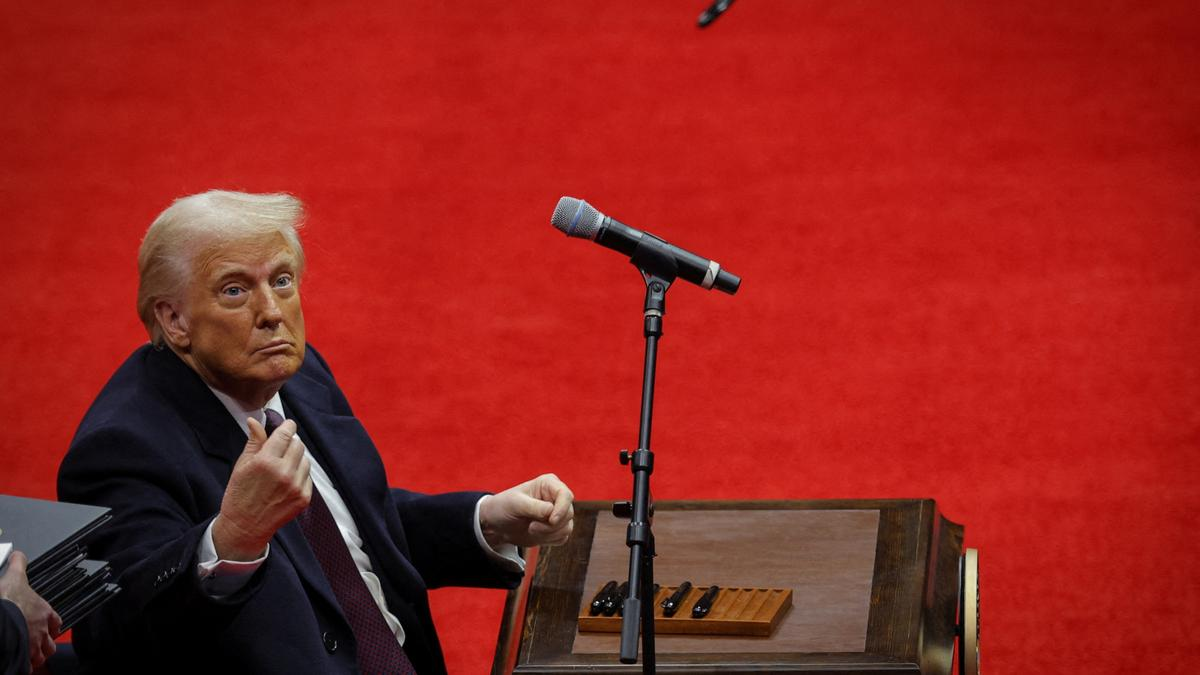In the structure of the U.S. government, the Constitution provides for checks and balances to prevent any one branch from acquiring too much power. Traditionally, these checks have been provided by Congress and the judiciary, but many analysts believe the most effective restraint on presidential power today comes from the American public.
Over the past few years, particularly under former President Donald Trump’s administration, these traditional mechanisms have faced growing difficulties in curbing executive overreach.
Despite the efforts of Congress and the courts, the American people—through grassroots movements and collective action—have emerged as a critical force in holding the president accountable.
This shift has occurred in part because political gridlock and judicial challenges have proven inadequate to confront the growing influence of Trump and his political allies.
Congress: A Weakened Legislative Check
Congress has historically played a vital role in checking the power of the president. However, in recent years, Congress has been reluctant or unable to challenge Trump’s actions effectively.
Under a Republican-controlled Congress, many of the standard mechanisms for curbing presidential power, including oversight hearings and legislation, have been sidelined due to party loyalty and political considerations.
Even when concerns about overreach arise, partisan divides have stymied any meaningful action against the executive branch.
In some cases, lawmakers have chosen to prioritize political unity over robust checks on executive power. While individual lawmakers have occasionally raised alarms, such as over executive orders or appointments, these efforts have often lacked sufficient support to bring about significant change.
Thus, Congress’s ability to serve as a genuine check on presidential power has significantly diminished.
The Courts: Legal Challenges with Limited Impact
The judicial branch has also struggled to act as a check on Trump’s executive authority. While courts have ruled against some of Trump’s policies, such as the travel ban or environmental deregulation efforts, the impact of these rulings has been uneven.
In some cases, Trump’s legal team has successfully appealed court decisions or found ways to circumvent legal rulings, limiting the effectiveness of the judiciary.
In 2025, the Supreme Court’s ruling on certain executive actions still has long-term implications, but Trump has continued to resist and defy judicial rulings, questioning the legitimacy of some court decisions.
This creates a sense of uncertainty about the power and influence of the judiciary, particularly in the face of an executive willing to flout legal norms.
Additionally, Trump’s influence on the judicial system, through the appointment of conservative judges, has shifted the legal landscape in his favor.
While courts remain essential in the system of checks and balances, their ability to reign in the executive branch has been significantly weakened.

The People: A New Check on Presidential Power
As institutional checks falter, public resistance has become the most effective means of holding power to account. Grassroots movements, organized protests, and widespread public engagement have become central to the political landscape.
In response to Trump’s policies and actions, millions of Americans have mobilized to demand accountability from both the president and his allies.
One of the most visible examples of this phenomenon is the anti-Trump resistance, which has grown over the years. Movements such as Indivisible, Women’s March, and March for Our Lives have united individuals across political lines to challenge the administration’s policies.
These movements have led to widespread demonstrations and voter mobilization efforts, successfully shifting the political narrative and pressuring political leaders to take action.
Social media has played a pivotal role in amplifying these efforts. Platforms like Twitter, Facebook, and Instagram allow activists and ordinary citizens to quickly mobilize, share information, and hold politicians accountable in real-time.
Public campaigns—whether it’s calling out corporations for political donations or pressuring lawmakers to adopt certain policies—have become a powerful tool for ordinary citizens.
Grassroots Activism: The Heart of Public Accountability
While traditional checks like Congress and the courts remain vital in theory, it is grassroots activism and the active involvement of citizens that has reshaped the conversation about presidential accountability. Public demonstrations, community organizing, and direct action have created powerful political forces that challenge the status quo.
Through coordinated campaigns, citizens have pressured the political elite to address issues like immigration policy, healthcare reform, and environmental protection, even when Congress and the courts have been slow to act.
One of the most significant ways the public has exercised its power is through voter engagement. In the 2020 presidential election and subsequent local elections, voter turnout surged, with many individuals motivated to resist Trump’s leadership.
Citizens in key battleground states successfully flipped seats in Congress, while organizing campaigns like the “Blue Wave” led to significant Democratic victories.
Moreover, social media platforms have made it easier for the public to hold politicians accountable in ways that were once unimaginable. Hashtags like #Resist and #ImWithHer have symbolized the strength of popular resistance, and viral campaigns have forced companies to reevaluate their relationships with political figures.
This level of transparency and mobilization gives power back to the people and places significant pressure on elected officials to consider the will of the voters.
Conclusion: The People as the Ultimate Check on Power
While the courts and Congress play significant roles in the system of checks and balances, the most effective restraint on presidential power today lies with the people themselves. Public movements, informed citizens, and grassroots activism have emerged as a central force in holding the president and other political leaders accountable.
As institutions such as Congress and the judiciary struggle with partisan gridlock and political pressures, the mobilization of the public has proven to be the most powerful tool in maintaining democratic norms and ensuring presidential accountability.
For more insights into the evolving role of public activism in politics, visit Vanity Fair’s original report.
Disclaimer – Our team has carefully fact-checked this article to make sure it’s accurate and free from any misinformation. We’re dedicated to keeping our content honest and reliable for our readers.
